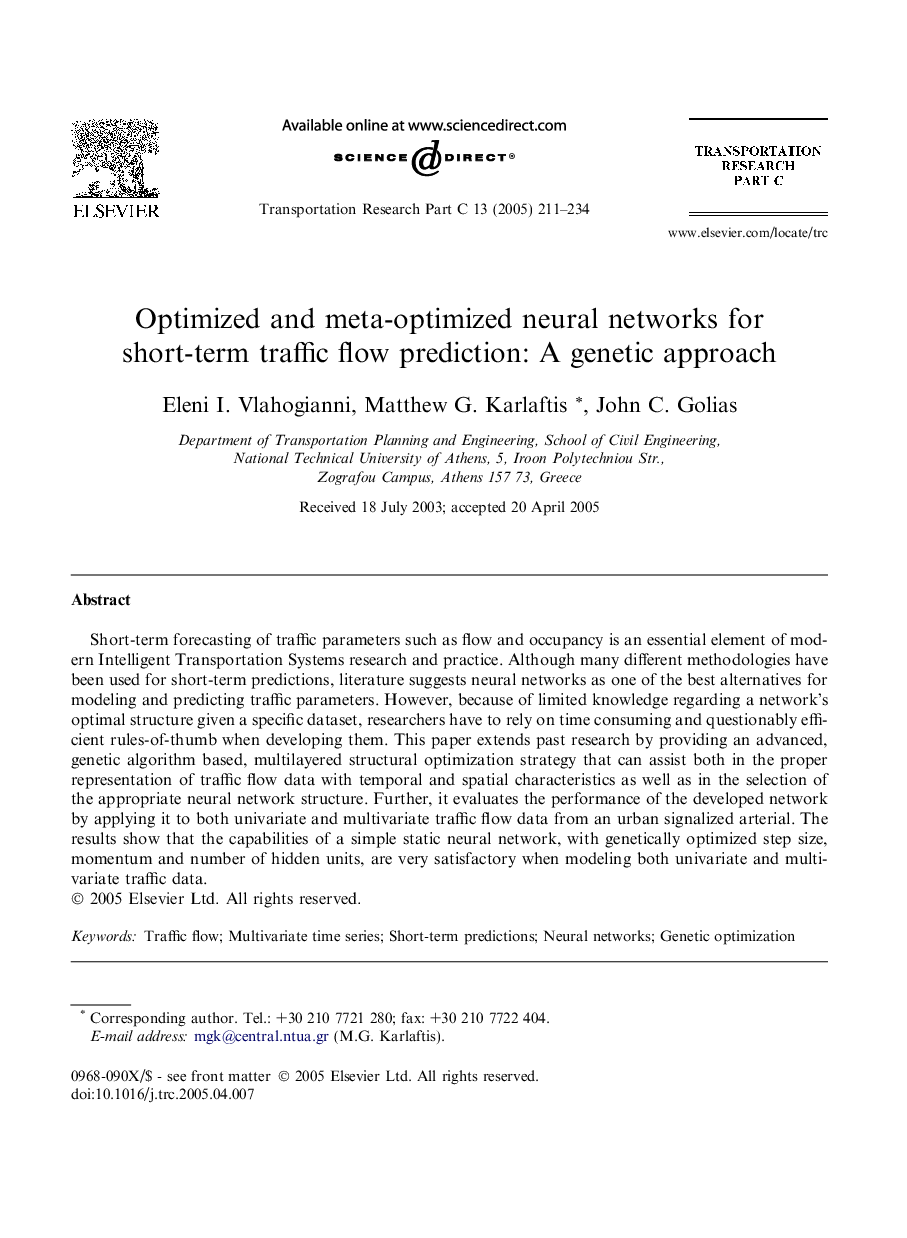| Article ID | Journal | Published Year | Pages | File Type |
|---|---|---|---|---|
| 10359417 | Transportation Research Part C: Emerging Technologies | 2005 | 24 Pages |
Abstract
Short-term forecasting of traffic parameters such as flow and occupancy is an essential element of modern Intelligent Transportation Systems research and practice. Although many different methodologies have been used for short-term predictions, literature suggests neural networks as one of the best alternatives for modeling and predicting traffic parameters. However, because of limited knowledge regarding a network's optimal structure given a specific dataset, researchers have to rely on time consuming and questionably efficient rules-of-thumb when developing them. This paper extends past research by providing an advanced, genetic algorithm based, multilayered structural optimization strategy that can assist both in the proper representation of traffic flow data with temporal and spatial characteristics as well as in the selection of the appropriate neural network structure. Further, it evaluates the performance of the developed network by applying it to both univariate and multivariate traffic flow data from an urban signalized arterial. The results show that the capabilities of a simple static neural network, with genetically optimized step size, momentum and number of hidden units, are very satisfactory when modeling both univariate and multivariate traffic data.
Related Topics
Physical Sciences and Engineering
Computer Science
Computer Science Applications
Authors
Eleni I. Vlahogianni, Matthew G. Karlaftis, John C. Golias,
